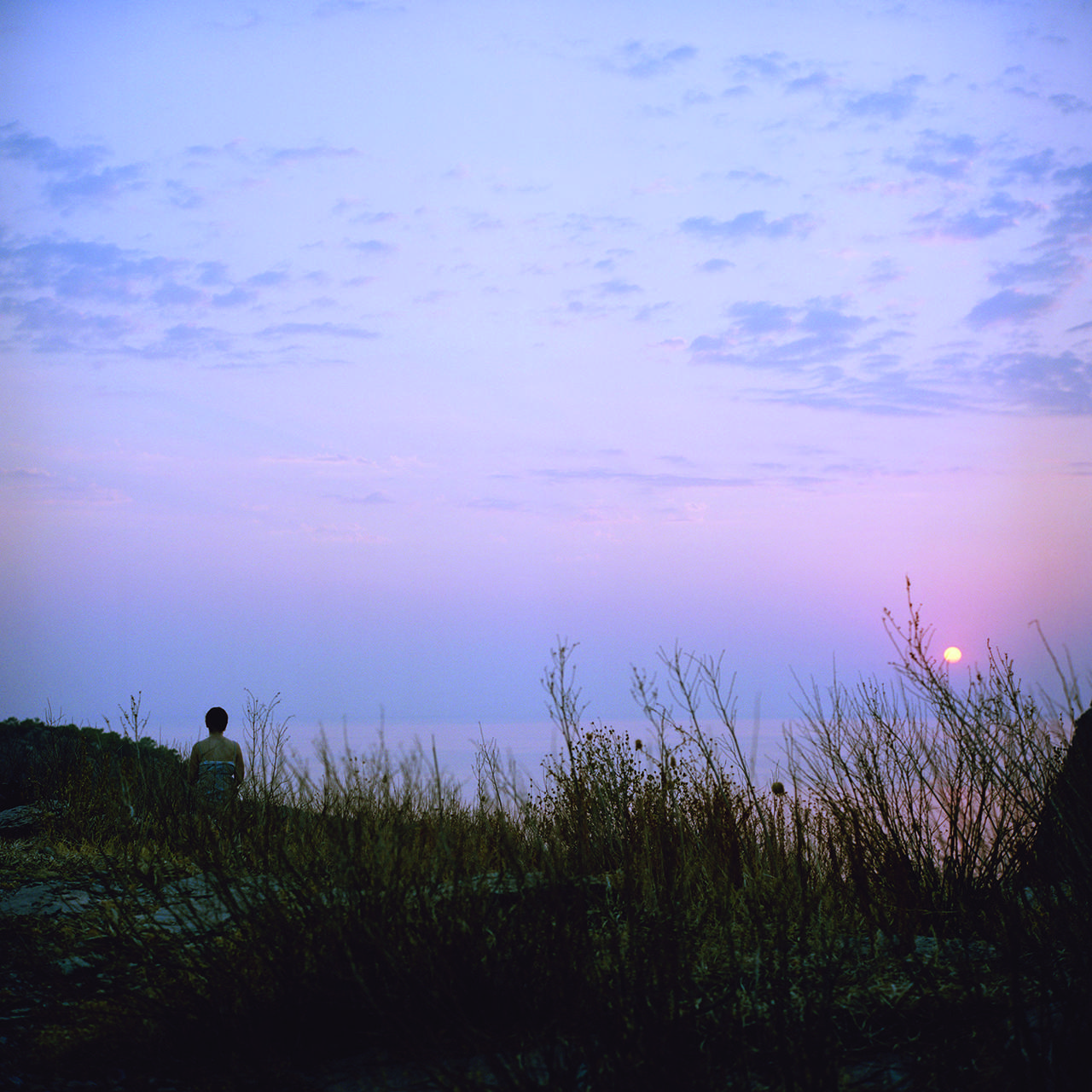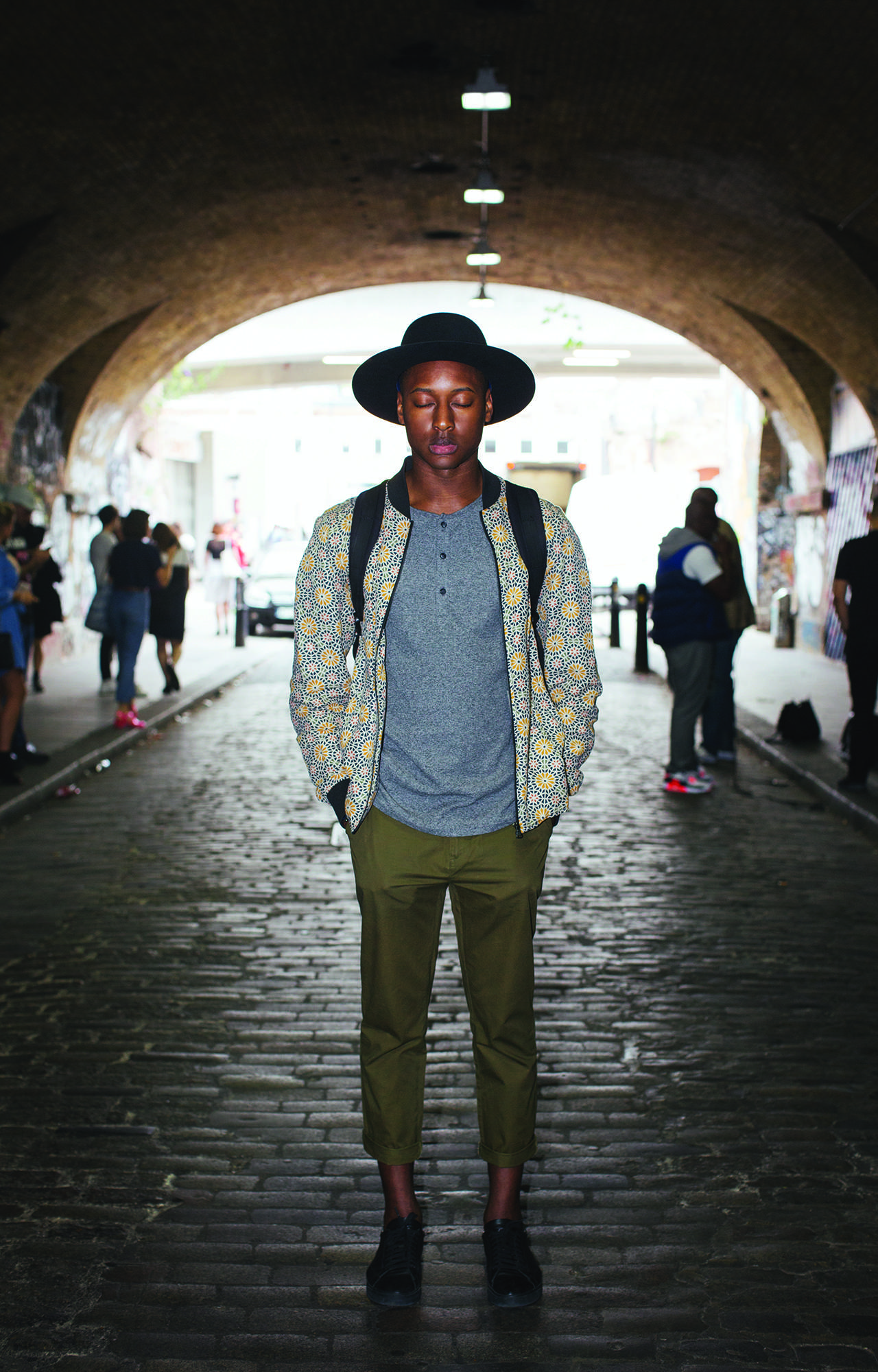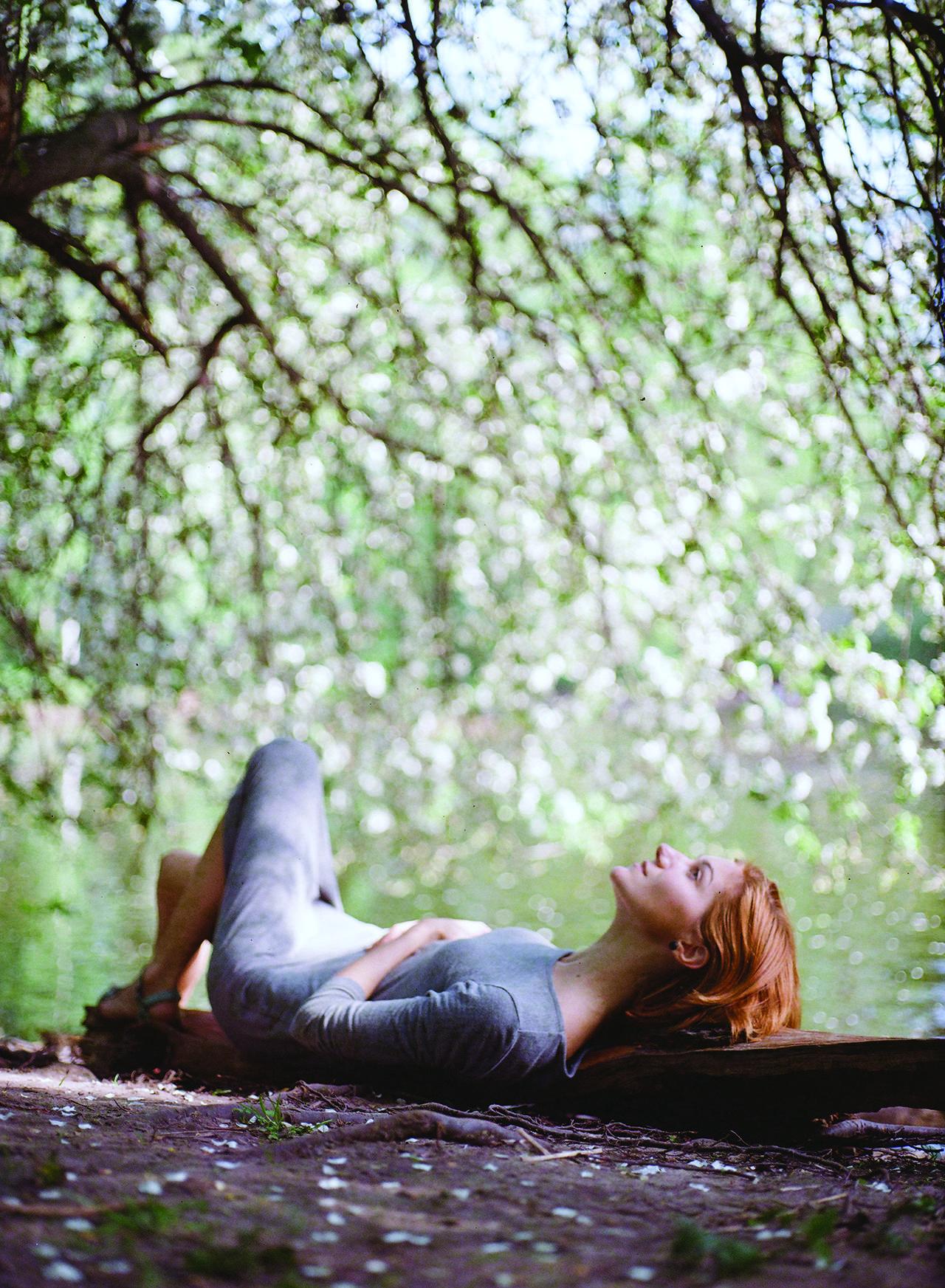My father died suddenly during the summer between my freshman and sophomore years of college. The loss unhinged me. Even though I lived with two roommates and was surrounded by fellow students and teachers, I spent the next three years of college in a fog of depression and isolation. After graduation I joined the Peace Corps, partly in order to avoid the draft—it was the height of the Vietnam War—and partly from having no idea where I wanted to go with my life.
Arriving in East Africa as a minimally prepared secondary-school teacher, I experienced being completely alone in a culture totally different from the one I’d grown up in. Paradoxically, instead of miring me in loneliness, being in this utterly new and different environment drew me out of my isolation. After a few weeks there, I woke up with a sense of shock to the realization that the way people were living in this part of the world—still organized in traditional tribal societies and cultivating and hunting their own food—was far more representative of how human beings had lived for thousands of years than the lifestyle I’d come from. American culture by contrast seemed like an artificial, self-involved, materialistic aberration.
This refreshing experience of solitude gave me the space to find myself, my own values, a sense of purpose. I enacted this new direction primarily in teaching young people who were the first in their families to receive a Western-style education, but also through organizing an anti-war protest among my fellow Peace Corps volunteers in Kenya. It was a formative time that, along with encountering Buddhism shortly after my return to the States, set the course for the rest of my life. Ever since that time, I’ve appreciated solitude, and contemplated its relationship to its close cousins: isolation, loneliness, and aloneness. Making peace with time alone and finding the means to do it in the healthiest way may be essential to living life well.
Henry David Thoreau famously wrote in Walden, “I went to the woods because I wished to live deliberately, to front only the essential facts of life, and see if I could not learn what it had to teach, and not, when I came to die, discover that I had not lived.” Thoreau’s celebration of solitude has itself been celebrated widely ever since. Yet, between 1825 (when Thoreau was eight years old) and 2000, use of the word “solitude” in printed books declined by over 70%. In the same period, use of the word “loneliness” increased by over 500%.

What may this curious statistic be revealing?
It suggests, perhaps, that we are living in the midst of an epidemic of loneliness accompanied by a famine of solitude, increasingly isolated from each other and yet starved for the kind of time alone that rewards us—and those who come in contact with us—deeply.
Both loneliness and solitude are conditions of aloneness—which simply describes the state of being by yourself and doesn’t carry a positive or negative connotation—but the actual experiences the two words evoke are very different. Loneliness involves feelings of sadness and yearning for what is absent: family, friends, home, native land, culture. This yearning for people and places that hold great meaning for us expresses a basic human need to belong—to be in active relationship with the things that make us who we are. Loneliness is an instinctive response to feelings of social isolation, moving us to seek and reach out to others. But at times this seeking and reaching behavior can turn into grasping and clinging. Becoming fixated on what we think is missing in our lives can itself become an obstacle to getting our needs for belonging and intimacy met.
Solitude, on the other hand, is time we choose to spend alone in a special way. It’s not just taking time for yourself. It’s not merely R&R, as important as that is in the midst of the over-pressured lives many of us lead these days. Rather than taking time for ourselves, genuine solitude is about taking time with ourselves: time devoted to cultivating a deeper, more intimate, and more authentic relationship with ourselves.
We become who we are in relationships. The very sense of being a self—a “me” who is different from “you” and “them”—develops through an infant’s attachment relationship to their mother, whose voice and smiles and reactions teach it that it possesses agency, the ability to cause things to happen outside of itself.
As social animals, we live in a mesh of relationships. Much of what’s most important and meaningful for us is mediated by our relationships with others. At the same time, these vital relationships also constrain us. Naturally, there are times when these constraints are socially beneficial, such as when a friend or lover is able to interrupt a damaging habit we’ve fallen into. At other times, though, the tangle of relationships can constrain us in a way that suppresses essential aspects of our nature and limits our potential for growth and change and self-realization. We can get trapped inside a version of who we are expected to be that is out of touch with who we are.
As we grow from childhood to adolescence to adulthood, eventually our most fundamental relationship becomes the inner relationship with ourselves. This relationship is not always easy or comfortable, but it is through consciously recognizing and taking responsibility for our feelings and needs and desires, rather than seeking solutions from others or blaming them for our problems, that we develop inner strength. That inner relationship can be fostered in solitude, which can provide us a kind of strength that can counteract the frequent demands to be shaped by others’ agendas to the exclusion of our own deepest aspirations.
In solitude, the relatedness of our lives doesn’t go away, but its demands become less immediate, giving us the opportunity to check in with feelings and values at a deeper level, to experience a positive quality of aloneness (including perhaps some pangs of loneliness). In this deeper engagement with ourselves, our sense of identity and self-worth becomes less dependent on input and affirmation from others.
As we learn to be less psychologically and emotionally dependent—and our sense of who we are matures—we find greater freedom in how we experience and interact with others
As we learn to be less psychologically and emotionally dependent—and our sense of who we are matures—we find greater freedom in how we experience and interact with others. As our own need lessens we are more able to see others as they are, whether for better or for worse, and more able to genuinely give of ourselves to support and benefit other people—certainly those who are closest and most important to us, but also those with whom our relationships may be less deep or lasting.
While aloneness does sometimes involve feelings of loneliness, in a positive sense it represents our ability to stand on our own two feet, to function autonomously, to not be constrained by unhealthy dependence on others. It is a state of being “self-possessed.” Excessive time alone, of course, is unhealthy for most people. It can lead to psychological breakdown (as the movement to eliminate solitary confinement in our prison systems attests). But insufficient time alone, like an unbalanced diet, deprives us of essential nutrients for living a whole and rewarding life.
Practicing mindfulness can greatly enhance the benefits of solitude. Since it is about paying attention to whatever is occurring in the present moment, mindfulness practice allows the background clutter of thoughts and fantasies to subside and the clear, calm, and spacious innate nature of the mind to appear. At the same time, mindfulness is about cultivating a life-enhancing inner relationship between whatever arises in our experience and our simultaneous awareness of its arising. This special quality of awareness is sometimes referred to as “witness consciousness.”
As the mind settles and becomes more clear and focused, awareness grows both deeper and broader. We start to notice what is going on below the level of our everyday discursive consciousness (discursive literally means “running on and on”). We get more in touch with our body and how it has its own, nonconceptual way of knowing. This bodily or somatic knowing is intuitive, holistic, and open-ended. And because, unlike our thinking minds, the body never lies, it gives us trustworthy feedback for navigating life’s ups and downs as well as accurate insights into right next steps.
Mindfulness also sharpens our sense perceptions, keeping us appreciatively engaged with our surroundings. Literally as well as figuratively, we see more clearly and are able to act in the world more skillfully and effectively.
William Wordsworth evokes “that inward eye/Which is the bliss of solitude.” The inward eye sees the contents of our inner life, much of which occurs out of view of our outward-oriented senses, below the radar, as it were. In solitude, we have the opportunity to bring our hidden parts into the light of awareness.
Actually, it’s not we—our familiar goal-oriented selves—who bring what is hidden to light. Rather, we learn to create a safe, caring space that allows these parts to start to show themselves to us. Like shy animals coming out from behind the bushes, they appear and even permit us to enter into a mutually beneficial relationship.
Many of these shy animals have their origins in childhood experiences. The child part of our self doesn’t disappear as we grow older—it’s still there, often in hiding, and it should be cherished. Its feelings, its fears and wants, deserve our attention: the attention of a mature person able to discern and respond with understanding and compassion. Old emotional wounds that are no longer experienced directly are like scars that can inhibit growth and enjoyment of life—until they’re able to show themselves and feel recognized and accepted by our grown-up selves.
This inner journey of self-disclosure can be painful and scary at times, hard work to undertake and stick with. But the rewards are great, as inner resources and aspirations we never knew were there present themselves.
In solitude we encounter our vulnerabilities, fears, and self-doubt. As we make friends with these “negative” feelings, we become less self-critical, less burdened, and more self-compassionate. Best of all, the life-enhancing inner relationship we cultivate during times of solitude also empowers our relationships with others. We are able to listen more deeply, process more empathically, and respond from a genuine caring for the other. We become less needy and more confident, more appreciative, and more grateful for those we share our lives with.
And solitude itself can be a powerful shared experience. Participating in group meditation sessions—time alone together—often evokes this. So does attending a concert where we touch into deep personal feeling while surrounded by other people: Rather than interfering, the atmosphere of attentive silence shared with the other listeners present supports and deepens our own experience of a rich, meaningful solitude.
Practicing solitude brings about growth and change. Change can be destabilizing, so resistance to change is natural. But “becoming who we are” is a journey without end. Our lives are most wholesome and authentic when we overcome resistance and embrace the change the world asks of us, enabling us to make a contribution that is true to ourselves. In that journey solitude is a vital ally.
And we become less lonely. Far from hiding out in isolation and self-involvement, our embracing of solitude makes us more engaged, more able to contribute to building a society that is sane, peaceful, and just. As Thoreau wrote in his journal, essentially notes to himself that others would later read, “You think that I am impoverishing myself withdrawing from men, but in my solitude I have woven for myself a silken web or chrysalis, and, nymph-like, shall ere long burst forth a more perfect creature, fitted for a higher society.”

Isolation vs. Solitude
Not surprisingly, loneliness has been shown to lead to overall negative health outcomes. In a frequently cited article on social isolation and health, published in Perspectives in Biology and Medicine in 2013, John Cacioppo and Louise Hawkley reported on studies showing that socially isolated young adults “rated everyday events as more intensely stressful.” They coped with stressors passively rather than directly (“suppressing emotion” in lay terms), a risk factor for high blood pressure, and their isolation contributed to slower wound healing and poorer sleep.
Subsequent studies have continued to show negative effects of social isolation, including a 2017 meta-analysis by Adnan Bashir Bhatti and Anwar ul Haq, published in Cureus, that indicated a connection between isolation and illness in a variety of systems: “cardiovascular, inflammatory, neuroendocrine, cognitive, and affective.”
And yet, many researchers point to the benefits of solitude. There is a key difference, however, between social isolation and solitude. Isolation is usually forced on us, whereas solitude is a choice.
Isolation is usually forced on us, whereas solitude is a choice.
In The Handbook of Solitude (2014), developmental psychologist Kenneth Rubin, of the University of Maryland, lists four conditions required for solitude to be beneficial:
• you are spending time alone voluntarily
• you are capable of regulating emotion
• you are able and willing to join a social group
• you can also have good relationships outside of that group.
In the same handbook, Jack Fong, a sociologist at Cal State Polytechnic, contends that alone time has a key role to play in transcending social crises: By getting to know who we are, we can counteract the forces that want to shape us into who we are not.
More recently, four studies from Thuy-vy Nguyen, Richard Ryan, and Edward Deci, from the University of Rochester, published in 2017 in the Personality and Social Psychology Bulletin, showed that people who deliberately took time alone (away from all devices) experienced increased peacefulness, calm, and relaxation. While some participants felt sadder, lonelier, or more bored, a greater number felt less anxious and angry.

Two Mindful Practices for Being Alone
If you find it hard to be alone, that’s OK! Here are two practices to help you find a sense of ease through keeping yourself company.
Alone with Yourself
Go to a solitary place—outdoors in nature, a park or garden, or indoors in a quiet room. Settle yourself in a comfortable spot and let your body really rest into the support of what you are sitting (or standing) on.
Now, first take a minute or so to notice what’s going on in your mind, then move your attention down into your body. Keep your eyes open with a relaxed gaze. Sense how it feels to be alone—you can say to yourself, “I’m all alone here.” Notice what sensations are present in your body—how does your body react to “all alone”?
Sit for a while with whatever sensations are there in your body. Notice thoughts that come, but let them go and gently return your attention to how it feels in your body—especially your throat, chest, solar plexus, and belly. Do you notice any constriction or jitteryness or heaviness, or some other inner sensation? Is there an emotional texture, like fear or anxiety or self-consciousness? Or perhaps a sense of ease and comfort? Be with whatever feeling is there, gently keeping it company with no judgment.
Welcome uncomfortable feelings; try not to react to them but just notice them in a friendly way. Be mindful of thoughts that start to form but keep returning your attention to how it feels in your body. You are learning the art of solitude—simply being present for what is going on in your body and feelings without either suppressing those sensations or needing to interpret or do something about them.
Alone with Others
Now, do this exercise in a busy public place like a shopping mall, airport, or train station. Find an unobtrusive place to sit or stand. As before, take some time to let your body settle and feel the support of your seat or the ground. Lower your gaze, notice what’s going through your mind, then drop your attention down into your body—sensing especially inside your torso. Notice any sensations in those areas such as tightness, pressure, or a fluttery feeling. Whatever you find, just be with it, give it your friendly attention.
After a while let your gaze rise to take in everything that’s going on around you. You don’t need to look around with your eyes, just open your awareness and receive whatever visual images and sounds are going on in the space. As you do this, keep sensing inside your body. How is your body receiving the presence of all the other people? How does it feel to be alone in their presence? Try not to focus on any particular person or detail, keeping your awareness as broad and open as you can.
If you feel self-conscious, that’s fine—notice the physical sensations that come with feeling self-conscious. The point of the exercise is simply to notice how your body is responding to your environment as you also hold a sense of solitude in yourself. Allow yourself to become aware of these inner sensations without having to react to them. If you find yourself getting anxious, lower your gaze again and let your inner sensations subside or change. Experiment with raising and lowering your gaze and being aware of what is going on around you, while not losing touch with what is going on inside you.





